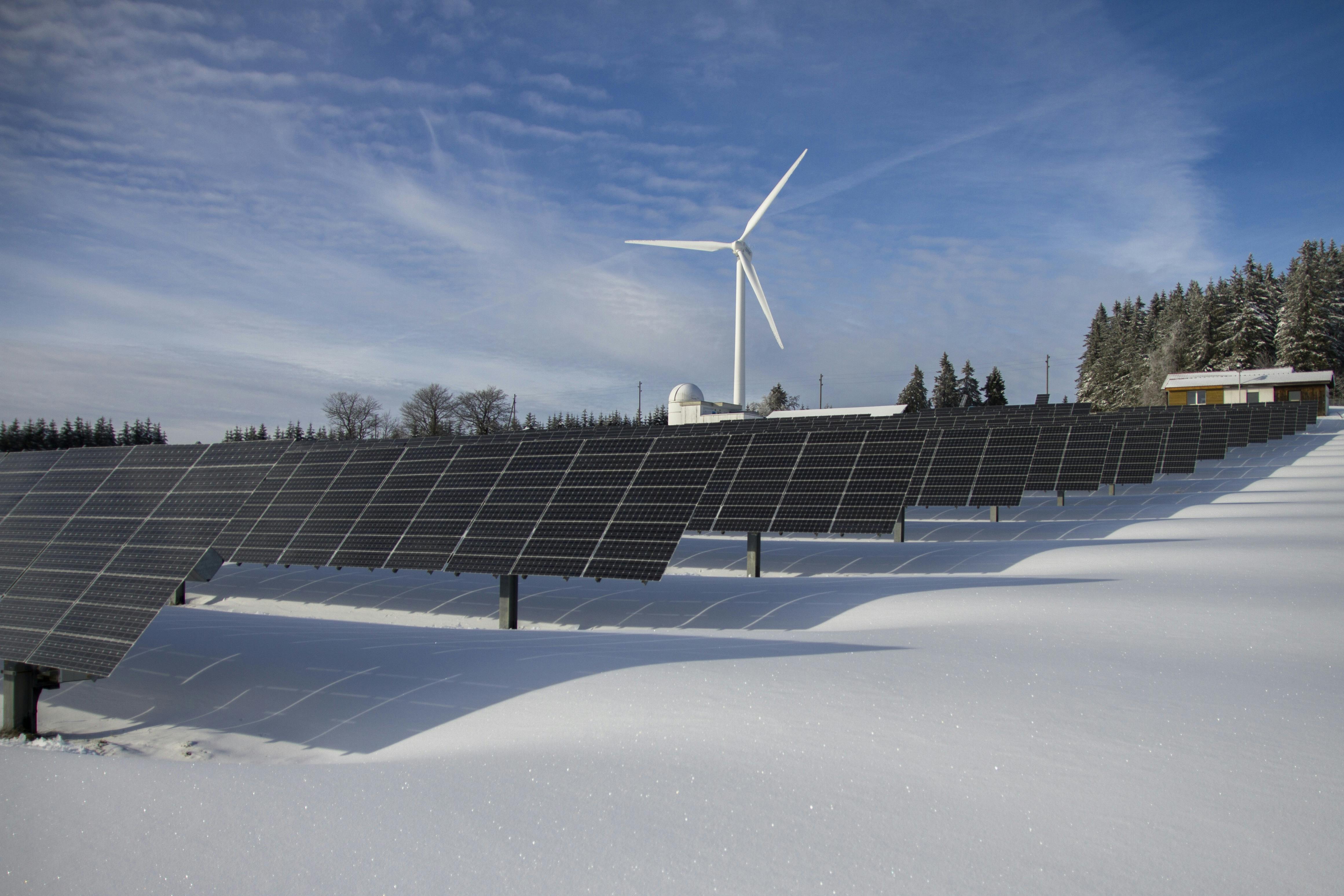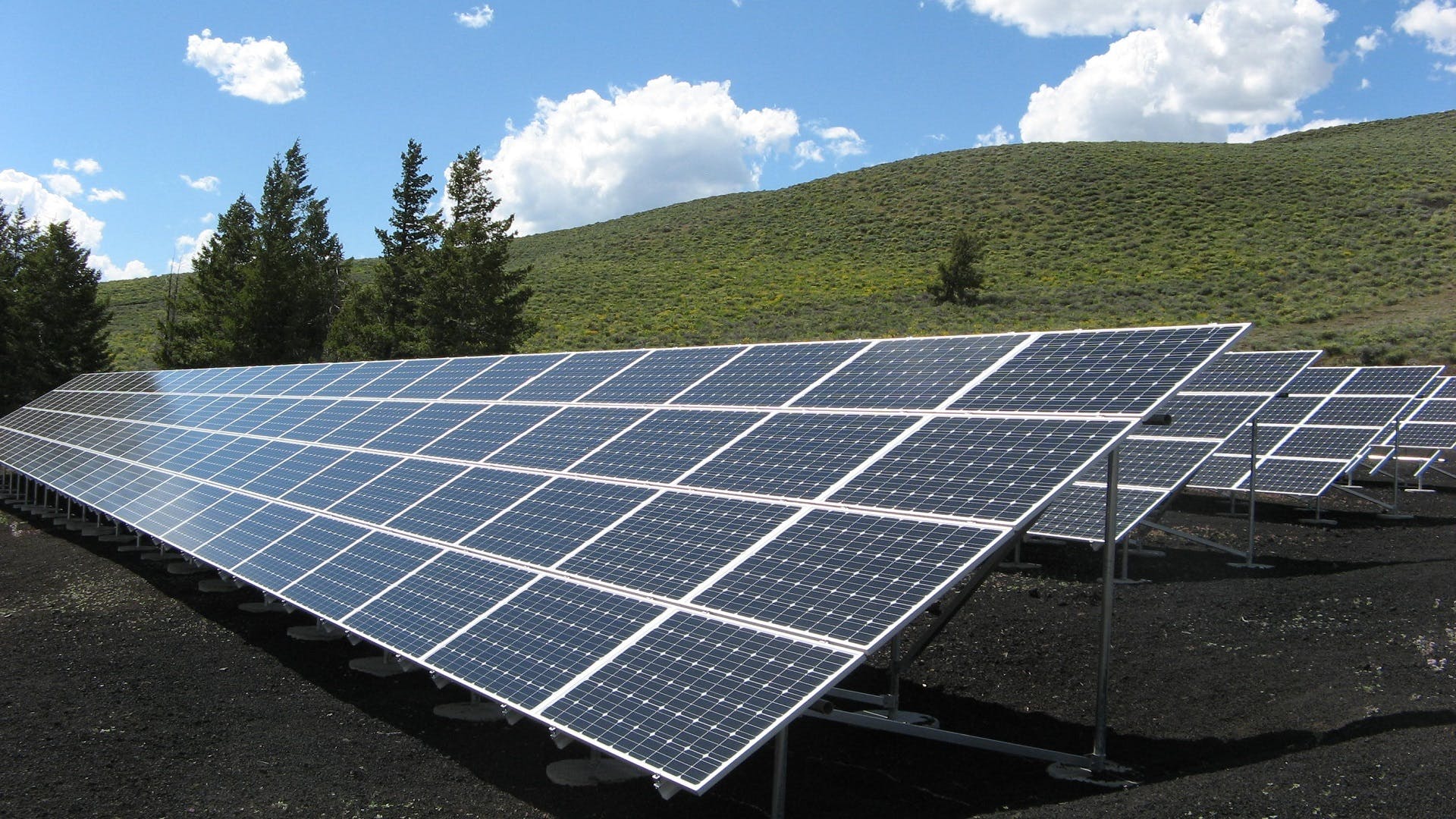Calculating the number of solar panels needed to power a water pump is a relatively straightforward process. With the help of some basic calculations, you can determine exactly how many solar panels are necessary to power your water pump. This article will provide an overview of the steps involved in calculating the number of solar panels needed for a water pump system.To calculate the size of solar panel needed to power a water pump, first determine the power required for the pump. This is usually provided in watts. Then, take into account any losses due to voltage drop and inefficiency. Multiply the total wattage by 1.25 to get the total wattage including losses. Finally, divide this total by the wattage rating of each solar panel to determine how many panels are needed.
Estimating Solar Energy Requirements for Water Pump
Solar energy is becoming increasingly popular as an alternative energy source for various applications, including water pumping. Estimating the solar energy requirements for water pump is essential to ensure that the system functions efficiently and effectively. To accurately calculate the amount of solar energy required, one must consider several factors such as the type of pump, size of pump, pumping height, and total daily water requirement.
The type of pump is the first factor to consider when determining solar energy requirements. Different types of pumps have different power requirements and therefore require different amounts of solar energy. For example, submersible pumps have higher power requirements than surface pumps due to their deeper working depth. Additionally, if a larger pump is needed to meet higher daily water requirements, then more solar energy will be required to power it.
The size of the pump is also an important factor when determining solar energy requirements for a water pump system. The size of a pump refers to its capacity or output flow rate in gallons per minute (GPM). A larger GPM rating requires more power and thus requires more solar energy than a smaller GPM rating. Furthermore, if the pumping height is greater than usual then additional power will be required and thus additional solar energy will be necessary.
Lastly, the total daily water requirement should be taken into account when estimating solar energy requirements for a water pump system. This refers to the amount of water that needs to be pumped each day which depends on many factors such as usage patterns and weather conditions in the area. If more water needs to be pumped than usual then additional power will be required and thus more solar energy will need to be provided.
In conclusion, estimating the amount of solar energy required for a water pumping system involves considering various factors such as type and size of pump, pumping height, and total daily water requirement. By taking these factors into account one can accurately calculate how much solar energy will be needed in order for the system to function efficiently and effectively.
Factors Affecting Solar Panel Size for Water Pump
There are several factors that play a role in the sizing of a solar panel for a water pump. The most important factor is the amount of energy required to power the pump. This will depend on the size of the pump, its efficiency, and the amount of water it needs to move. The more power needed, the larger the solar panel required. Additionally, factors such as weather conditions and geographical location can affect how much energy a solar panel can generate.
Another factor in determining the size of solar panel for a water pump is whether or not it is part of an off-grid system. An off-grid system would require more power than an on-grid system, as electricity would need to be generated from scratch rather than being pulled from an existing power source. A larger solar panel may also be necessary if battery storage is part of the system, as this will require more energy to charge up.
The amount of sunlight available is also an important factor when it comes to sizing a solar panel for a water pump. Generally, areas with higher amounts of sunlight will require smaller panels to generate enough energy to power the pump. This is because more sunlight means more energy being generated by each individual cell on the panel. Conversely, areas with lower amounts of sunlight will require larger panels to generate enough energy for operation.
Finally, other factors such as cost and available space can also influence what size solar panel is needed for powering a water pump. A larger panel may be necessary in order to generate enough electricity but this may come at an increased cost. Additionally, if space is limited then it may be necessary to choose a smaller panel in order to fit into existing structures or landscape designs.
In conclusion, there are several factors that play into choosing an appropriate sized solar panel for powering a water pump including electricity needs, off-grid status, available sunlight and cost/space considerations. By taking all these factors into account it should be possible to make an informed decision when selecting a suitable sized solar panel for your needs.
Different Types of Solar Panels for Water Pump
Solar energy is becoming increasingly popular as an alternative energy source, and one of the most common uses for solar energy is to power pumps for water. Solar panels are a great way to achieve this, as they are efficient, environmentally friendly, and cost-effective. There are several different types of solar panels available, each with their own advantages and disadvantages.
Polycrystalline solar panels are one of the most popular types of panels used in water pumping systems. These panels are made up of many individual crystalline silicon cells that are connected together to form a single large panel. Polycrystalline panels are often cheaper than monocrystalline models, but they tend to be less efficient at converting sunlight into electricity. They also require more space than monocrystalline models due to their larger size.
Monocrystalline solar panels consist of a single crystal of silicon that has been cut into very thin wafers. These wafers are then connected together to form a single large panel. Monocrystalline solar panels tend to be more efficient than polycrystalline models, but they can also be more expensive and require more space due to their larger size.
Thin-film solar cells consist of layers of thin film materials such as amorphous silicon or cadmium telluride that have been deposited onto a substrate material such as glass or plastic. These cells tend to be less efficient than monocrystalline or polycrystalline cells, but they offer some advantages such as being lightweight and flexible which makes them well suited for applications where space is limited or weight is an issue.
Solar thermal systems use mirrors or lenses to concentrate sunlight onto tubing containing a liquid such as water or antifreeze which then gets heated up by the sun’s rays and can then be used for various purposes such as heating swimming pools or powering pumps for water systems. These systems tend to be more expensive than using photovoltaic solar cells but can provide higher temperatures and greater power output if needed.
No matter what type of panel you choose for your water pumping system, it is important to make sure it is sized properly so you get the maximum amount of efficiency from your system. It’s also important to make sure the panel you select is durable enough to withstand the weather conditions in your area so it will last for many years without needing repair or replacement.
Understanding Voltage and Current of Water Pump Application
Voltage and current are two very important parameters when installing or troubleshooting a water pump system. Voltage is the electrical pressure that drives the current through the pump, while current is the rate at which electrical energy is being used. It is important to understand both voltage and current when working with pumps, as it can have an impact on the performance of the system.
In order to properly install or troubleshoot a water pump system, it is important to know how much voltage and current is required for the application. The type of pump, the size of the motor, and other factors will determine what voltage and current ratings are needed for a particular application. For example, a small submersible pump may require only 12 volts of power, while a larger industrial-grade pump may require up to 400 volts of power.
It is also important to consider how much power needs to be supplied in order to properly operate a water pump system. This will depend on how much water needs to be moved by the pump as well as any other external factors such as temperature or altitude that could affect its performance. For instance, a larger industrial-grade water pump may require more power than a small submersible pump in order to move more water or operate in extreme temperatures.
In addition to understanding voltage and current requirements for each application, it is also important to be aware of any safety concerns that may arise from using certain types of pumps in certain environments. Pumps should always be operated within their specified voltage range in order to ensure safe operation and avoid potential hazards such as electric shock or fire hazards. It is also important to check with local building codes for any additional safety requirements that may need to be met before operating any type of water pumps in different locations.
Overall, understanding voltage and current requirements for each type of application will help ensure proper installation and operation of a water pump system. Knowing how much power needs to be supplied for each application will help ensure efficient operation while avoiding potential safety hazards associated with operating pumps outside their specified voltage range.

Converting Amps to Watts for Water Pump Solar Panel System
Converting amps to watts for water pump solar panel system is an important process to understand when setting up a solar energy system. The amount of power that a water pump requires is typically measured in watts, while the current output of a solar panel is measured in amps. To accurately determine the amount of power your solar panel needs to provide for your water pump, you must first convert the amps into watts.
The most basic way to convert amps into watts is by multiplying the amp rating by the voltage of your system. For example, if your water pump requires 10 amps at 24 volts, then you would multiply 10 by 24 to get 240 watts. This will give you an approximate power requirement for your solar panel system.
You can also use a more complex formula if you need a more accurate calculation. This involves multiplying the amp rating by the voltage of your system, and then multiplying that number by 1.25. This will give you a more accurate wattage rating that takes into account any inefficiencies in the system or losses due to resistance in the wiring of your solar panels.
It is important to remember that while this method will give you an accurate wattage rating, it does not take into account any other factors such as temperature or environmental conditions that may affect the efficiency of your solar panel system. As such, it is always best to consult with an expert before setting up a water pump powered by a solar panel system. They can help ensure that all components are correctly sized and configured to maximize efficiency and performance for your specific application.
Considerations before Choosing a Solar Panel for Water Pump
When it comes to choosing a solar panel for a water pump, there are several factors to consider. First, it is important to evaluate the amount of power required to operate the pump. This is based on the size of the pump, as well as any other components such as an irrigation controller or motor that may be in use. Additionally, local weather conditions should also be taken into account when selecting a solar panel; if the area experiences frequent fog or storms, a higher wattage system will likely be necessary.
The efficiency of the solar panel should also be considered when selecting a system for water pumping. Most modern solar panels come with an efficiency rating which indicates how much energy they can generate given their size and design. This is important to keep in mind when choosing a system, as higher efficiency models will require less space and fewer panels while still providing ample power for operation.
The quality of installation and maintenance of the solar panel system is also important; poorly installed systems can result in inefficient energy generation and costly repairs down the line. Additionally, regular maintenance such as cleaning and inspecting wiring connections should be performed to ensure that the system remains in optimal condition over time.
Finally, cost is another major factor when selecting a solar panel for water pumping applications. In many cases, investing in more efficient models may mean paying more upfront but resulting in long-term savings due to reduced energy usage over time. Additionally, installing multiple smaller panels rather than one large one can help spread out costs while still providing enough power for operation.
Calculating Overall Watts Needed for the Water Pump System
When it comes to an industrial water pump system, it is important to calculate the overall watts needed to power the system. This calculation will provide you with an estimate of how much power will be required to run your pump system efficiently and safely. In order to calculate the overall watts needed for your water pump system, you will need to consider several factors such as the size of the pump, the type of motor being used, and any other components that may be present in the system.
The size of the pump is one of the main factors in determining the amount of watts needed for your water pump system. A larger pump usually requires more watts than a smaller one. When calculating overall watts needed, make sure you consider any additional features such as adjustable pressure control or variable speed settings which can also increase power consumption.
The type of motor used in your water pump system is also an important factor when calculating overall watts needed. A direct current (DC) motor typically requires more watts than an alternating current (AC) motor, but can provide more efficient operation at lower speeds and higher torque at higher speeds. The efficiency rating of any motor should also be considered when calculating overall watts needed; a motor with a higher efficiency rating will require less power than one with a lower efficiency rating.
Finally, any other components present in your water pump system such as pumps, valves, or other accessories should be taken into account when calculating overall watts needed for your water pump system. Each component will require its own wattage and should be accounted for before coming up with a final wattage estimate for your entire system.
By properly considering each factor involved in powering your water pump system, you can accurately calculate the overall watts required for successful operation and ensure that your system runs efficiently and safely at all times.

Conclusion
Calculating the size of the solar panel for a water pump system can be done in several ways. It is important to understand the size of your pump, available sunlight, and the voltage of your solar panel. The most accurate way to calculate the size of a solar panel is to use a solar sizing calculator or work with an experienced installer.
It is also important to account for any losses that may occur due to shadows and other environmental factors when calculating the size of your solar panel. Taking all these factors into consideration will help you determine an appropriate size for your solar panel so that you can get the most out of your water pump system.
In conclusion, calculating the size of a solar panel for a water pump requires knowledge about the pump, available sunlight, and voltage. Using a calculator or working with an experienced installer are both great options that can help you make sure your system is properly sized for optimal performance.

